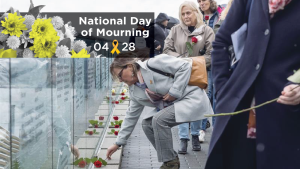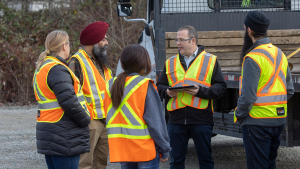Because of time and molecular energy, nothing stays the same; everything changes.
Anyone working in construction is familiar with the ebb and flow of growth and decline in their industry, including that part of it concerned with health and safety.
“The mix of industries in Canada in the early 1900s, when workers compensation and occupational health and safety were being developed, was very different from today,” said Terry Bogyo, an independent health and safety researcher. “In B.C., for example, coal mining and forestry were much bigger sectors and were the sources of more injuries than construction.”
Since then, as some industries became more important and others less so, the legislative and regulatory framework has changed along with them.
“The scope of the coverage has evolved to recognize other workplace hazards,” said Bogyo. “Some of them, such as harassment and bullying, always existed but were not recognized as significant risks, while others, such as COVID-19, are new.”
As further research leads to recognizing other injuries and harms, more risks will be included in the scope of coverage, says Bogyo.
“This will be particularly true of occupational diseases where the nature of agents is in constant flux and their causative significance will become apparent only with time and research,” he said.
Labour organizations have played an important role in health and safety by demanding employer accountability.
More recently, new associations have been formed for the health and safety of workers in individual industries.
The first industry safety association in BC was the Farm and Ranch Safety and Health Association (FARSHA), which was founded in 1993, says Roberta Ellis, former senior vice-president of WorkSafeBC and now the chairwoman of the BC Health Care Occupational Health and Safety Society. (FARSHA is now called AgSafe.)
“Beginning about 20 years ago, WorkSafeBC worked with industry employers and unions to help build the safety associations,” said Ellis. “It was part of a drive to form broader and deeper partnerships with employers and unions. Today there are 13 industry safety associations in BC.”
At first there were two separate safety organizations for construction, the BC Construction Safety Network and the Construction Safety Association of BC. In 2010, they merged to form the BC Construction Safety Alliance (BCCSA).
Joe Wrobel, president of JPW Earthworks Inc. in Vernon, B.C. and BCCSA board member, says the formation of the alliance is the most significant health and safety event in BC construction.
“Injuries and fatalities have been reduced significantly since its formation,” said Wrobel. “And workplace hazards are becoming better known and therefore can be better protected against. The BCCSA is a nimble, effective organization that is quick to respond to the industry’s safety needs.”
For example, in 2020 BCCSA launched The SiteReadyBC Site Safety Orientation Program (SiteReadyBC) for new and young construction workers.
“The purpose of SiteReadyBC is to train them how to protect themselves and their employers from injury or fatality on the job site,” said Erin Linde, BCCSA director of health and safety services, who led the project to establish the program.
Participants receive training on 20 topics in the form of computer-based, interactive modules.
“Students have to engage and actually learn something,” said Linde. “We want an employer to know the worker earned that certificate. It’s not a difficult course, but it’s also not easy.”
Across Canada there is a total of 13 organizations like BCCSA.
In Newfoundland, the Newfoundland and Labrador Construction Safety Association (NLCSA) is celebrating its 25th anniversary in 2022, says Tammy McCabe, NLCSA’s manager of communications and industry relations.
Like construction workers in the rest of Canada, their counterparts in Newfoundland and Labrador suffer from mental health problems that sometimes lead to suicide.
The association recently hosted a virtual leadership roundtable on mental health and suicide prevention.
“The purpose of the forum was to discuss with industry stakeholders suicide in construction, and explore the development of a suicide prevention strategy,” said CEO Jackie Manuel.
Construction employers across Canada over the last 20 years have had to deal with a growing number of regulatory requirements, says Dee Miller, chairwoman of JJM Construction Ltd. in Delta, B.C.
“The biggest impact on safety has been the change in the Criminal Code which assigned liability and now enforces due diligence with legal ramifications for all involved who direct the work,” said Miller. “Employers now have more responsibilities and increased costs.”
On the other side of the ledger, she says, construction has embraced the transition from assigning blame to individuals to focusing on the development and implementation of safety management systems, complete with audits to ensure compliance.
“Could the industry do better? Absolutely,” she says. “Occupational health and safety continues to be a work in progress.”










Recent Comments